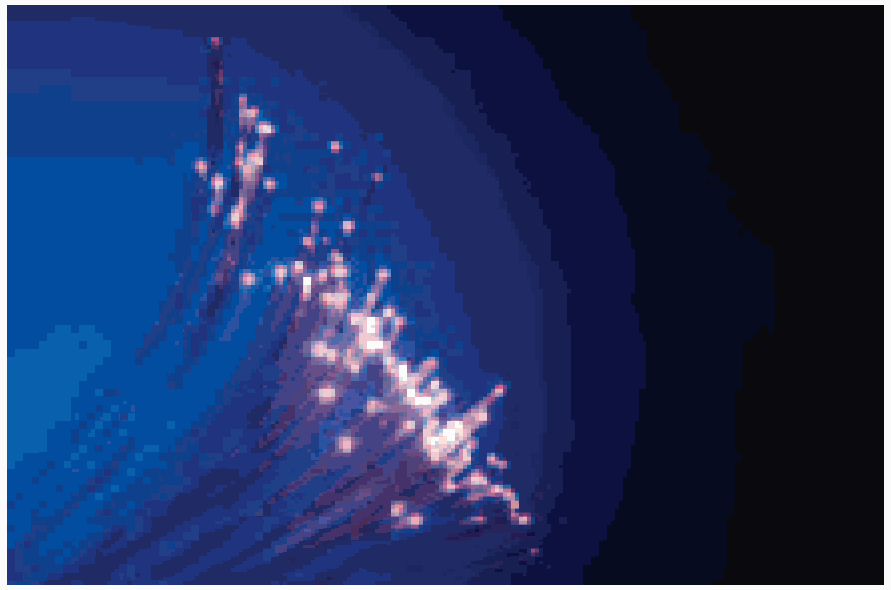Photonic Optical Materials Tutorial
Introduction
Photonics, an analog of electronics, is a technology in which photons instead of electrons carry information.1,2 The significance of photonics arises from its advantages over electronics in that photonics provides larger bandwidths, faster response times, and less noise from extraneous electromagnetic fields. Photonics holds application potential in many areas of present and future information and image-processing technologies.3-7 The role of the nonlinear optical (NLO) process is to provide key functions necessary for the photonic technology. Abilities to change properties of light, such as its frequency, phase, amplitude, or transmission characteristics when the light passes through an NLO-active medium are examples of phenomena that are potentially useful in photonics. Thus, advancements in the field of nonlinear optics will have a direct effect on the progress of photonic technology.
Crystal-Grade Materials
Inorganic halides such as cesium iodide or lanthanum bromide are widely used to make crystal grade materials for scintillation detectors used in medical imaging and other applications. Scintillation detectors are also used for such applications as the detection of gamma rays. In these devices, gamma rays are absorbed by crystalline materials, which then give off light. The amount of emitted light is proportional to the amount of radiation striking the crystals. The crystals used in these devices must be of high-purity. For medical devices, crystals are often doped with thallium in order to improve their performance.
Organic NLO Materials
The field of organic nonlinear optics has come a long way since the its triggering development in 1970. In that year, Davydov et al. reported a strong second harmonic generation (SHG) in organic molecules having electron donor and acceptor groups bridged by a benzene ring.8 In general, second-order nonlinearity originates from an organic molecule as shown in Figure 1 and having an acentric structure. These push-pull chromophores, specially tailored for large optical nonlinearity, are being applied in emerging electronic and photonic technologies. They are replacing the existing technology that is based on inorganic single crystals, which are expensive, difficult to grow in high quality, and are not easy to incorporate into electronic devices.9

Figure 1.Schematic illustration of a nonlinear optical (NLO), push-pull chromophore.
Organic NLO molecules possess donor-acceptor groups attached to an aromatic ring system that increases charge transfer through p-electron delocalization.10 Such dye molecules are characterized by intramolecular charge transfers that give rise to large ground and excited state dipole moments, and second-order molecular hyperpolarizability.
The organic materials are superior to inorganics both in the speed of response and in the magnitude of the third-order effect.4,5,11 The largest third-order susceptibilities have been observed in macromolecules with p-conjugation along an extended backbone. The p electrons, distributed along the backbone, react quickly when other molecules, an electric field, or light changes the electrical environment. This quick response as well as the extensive spreading of the p cloud is the source of a large, fast, third-order response in these quasi, one-dimensional systems.
The last decade has seen an increasing trend towards the use of organic polymers as photonic components because of their ease of processing and fabrication; compatibility with metals, ceramics, semiconductors, and glasses; good mechanical strength; and flexibility to tailor nonlinear optical properties.12 A primary requirement for a material to exhibit nonlinear optical (NLO) activity is that it should be noncentrosymmetric. In polymer-based NLO materials, the chromophore can be incorporated into a polymer matrix in a number of ways. Early efforts focused on guest–host systems. Alternatively, the chromophores were covalently attached to the polymer backbone as side chains, or made part of the polymer backbone itself, markedly improving long–term stability, and permitting their use in practical devices.12,13
More recently, the electrostatic self-assembled monolayer (ESAM) technique for fabricating noncentrosymmetric structures resulting in a large second order NLO response is being increasingly researched.14-16 The advantages of this technique include long-term stability of χ(2) in contrast to electric field poling of a glassy polymer, thicker (tens of microns thick) films than by the Langmuir-Blodgett technique, and easier fabrication than by covalent self-assembly methods. By ESAM processing, a multilayer film is formed by alternately immersing the substrate in aqueous solutions of a polyanion and a polycation. Either the polycation, the polyanion, or both may contain polarizable chromophores, i.e., the active polyelectrolyte. In concert with the other variables, the choice of polyelectrolyte can have a marked effect on reinforcing or disrupting the orientation of chromophores in successive layers and, hence, on the second order NLO response.
Plastic Optical Fibers
Polymeric materials in general, and fluoropolymers in particular, are being extensively researched for their use in plastic optical fibers (POFs), waveguides, optical filters, fiber gratings, as well as other optical devices.17-19 They offer several advantages over their inorganic counterparts including relative ease of processing, light weight, insensitivity to vibrational stress, low cost, and a wide versatility with respect to their design and synthesis to obtain properties that suit specific device parameters. Figure 2 is a photograph of an archetypical optical fiber. In the case of POFs, fluoropolymers, which have the lowest refractive index, serve as cladding material to maximize the numerical aperture (NA) of the fiber. Numerical aperture is a measure of the optical fibers ability to trap light more efficiently and is quantified as NA = [(n core2 – n cladding2)]1/2. Other issues that must be considered in the fabrication of POFs include transparency at the wavelengths of transmission, thermal expansion matching of cladding and core materials, and thermal stability in the temperature range of operation.20

Figure 2.A photograph of an archetypical optical fiber.
References
To continue reading please sign in or create an account.
Don't Have An Account?